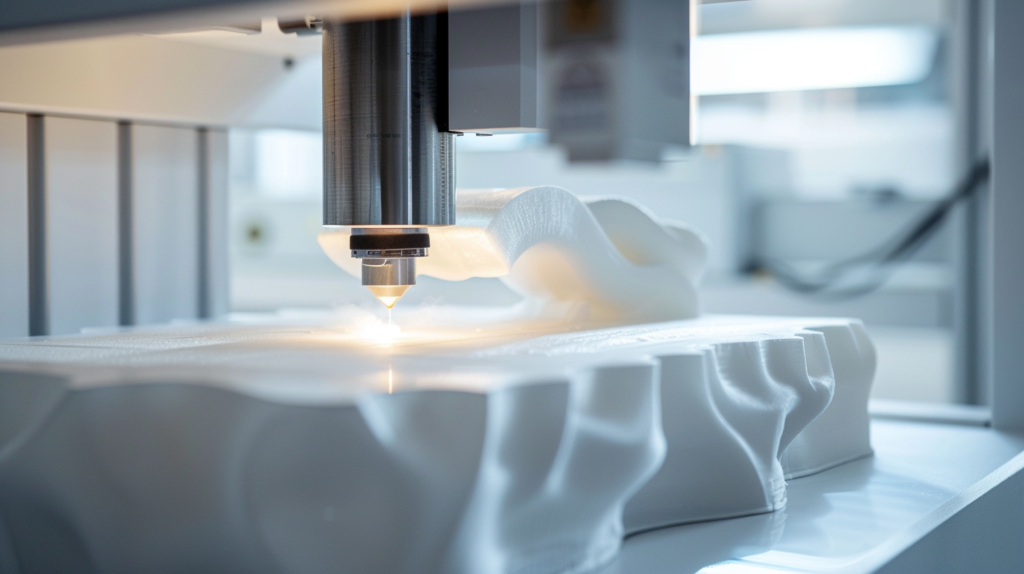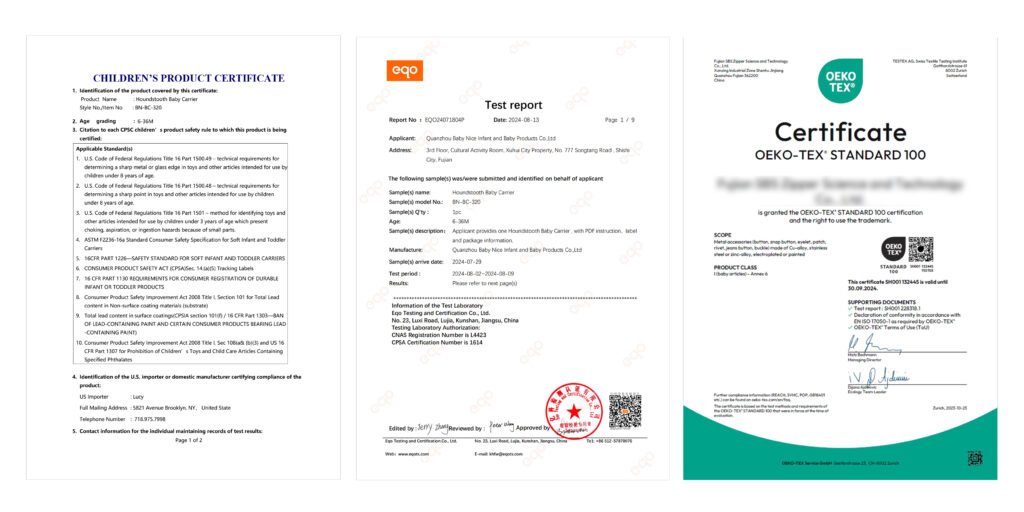Key Safety Standards for Baby Products: CPC, CPSIA, CPSC, EN 13209-2, TR 16532, and ASTM F2236-16A
Understanding Testing Standards and Compliance for Baby Products
When it comes to the safety of children’s products, it is crucial for manufacturers, retailers, and consumers to understand the various regulations and standards in place. As a leading brand in the baby products industry, Babyncie is committed to ensuring that all of our products meet the highest safety standards. In this comprehensive guide, we will explore several key terms and standards, including CPC, CPSIA, CPSC, EN 13209-2, TR 16532, and ASTM F2236-16A, and discuss their interconnections and testing requirements.

What is a Children’s Product Certificate (CPC)?
A Children’s Product Certificate (CPC) is a mandatory document that manufacturers or importers must provide based on testing results from a CPSC-recognized third-party laboratory. The CPC demonstrates that a children’s product complies with all applicable safety rules and regulations. It is a legal responsibility of the manufacturer to issue this certificate to distributors and retailers, ensuring product compliance.
What is the Consumer Product Safety Improvement Act (CPSIA)?
The Consumer Product Safety Improvement Act (CPSIA) was enacted in 2008 to enhance the safety of children’s products. This law mandates strict testing of children’s products, particularly concerning harmful substances like lead and phthalates. CPSIA requires manufacturers to conduct third-party testing to ensure compliance with safety standards and to provide a CPC as proof of compliance.
What is the Consumer Product Safety Commission (CPSC)?
The Consumer Product Safety Commission (CPSC) is a federal agency responsible for protecting the public from unreasonable risks of injury associated with consumer products. CPSC develops and enforces regulations related to the safety of children’s products, including the implementation of CPC and CPSIA. The agency is responsible for monitoring compliance with these standards and taking enforcement action when necessary.
What is EN 13209-2?
EN 13209-2 is a European standard specifically for baby carriers. It outlines safety, comfort, and ergonomic requirements for these products. This standard ensures that the design of baby carriers is suitable for the developmental stages of infants, minimizing risks such as suffocation. Products conforming to this standard must undergo rigorous testing procedures to ensure their safety. Manufacturers selling baby carriers in the European market must ensure that their products meet the requirements of EN 13209-2.
What is TR 16532?
TR 16532 refers to a technical report concerning children’s products, typically addressing safety and performance requirements. While specific details may vary, this standard usually complements other regulations (like CPSIA and ASTM standards) to ensure that products meet safety requirements. TR 16532 may provide additional guidance on testing methods, materials, and design considerations for children’s products.
What is ASTM F2236-16A?
ASTM F2236-16A is a consumer safety specification for soft infant and toddler carriers. It establishes performance requirements and testing methods to reduce the risk of injury and death associated with the use of soft infant carriers. Manufacturers must conduct tests in CPSC-recognized laboratories and demonstrate compliance through the CPC. This standard is applicable to the U.S. market and ensures the safety and performance of baby carriers sold in the country.

How are these standards interconnected?
The various standards and regulations discussed above are interconnected in several ways:
- CPC serves as the outcome of CPSIA and CPSC regulations, mandating that all children’s products undergo testing and certification.
- CPSIA provides the legal framework for testing and certification outlined in the CPC, ensuring the safety of children’s products.
- CPSC oversees the enforcement of CPSIA and CPC, ensuring that products comply with safety standards.
- EN 13209-2 and ASTM F2236-16A are specific product standards applicable to the European and U.S. markets, respectively, ensuring the safety and performance of baby carriers.
- TR 16532 may offer additional technical guidance and requirements that align with these standards.
What are the testing requirements for these standards?
The testing requirements for these standards typically include:
- Third-Party Testing: All children’s products must be tested in CPSC-recognized laboratories to ensure compliance with relevant safety standards.
- Material and Chemical Composition: Products must adhere to CPSIA’s restrictions on chemical content, such as lead and phthalates.
- Performance Testing: As outlined in ASTM F2236-16A, products must meet specific performance criteria, including strength and stability tests.
- Documentation and Record-Keeping: Manufacturers must maintain testing records and provide relevant information in the CPC, such as testing dates, locations, and laboratory details.

People Also Ask
What happens if a children’s product fails to meet safety standards?
If a children’s product fails to meet the required safety standards, it cannot be legally sold in the market. Manufacturers may face penalties, recalls, and legal action if they knowingly sell unsafe products.
How often do children’s products need to be tested for safety?
The frequency of testing depends on the product and the specific regulations. Some products may require annual testing, while others may need to be tested whenever there is a significant change in the design or materials used.
Are there any exemptions from the safety standards?
In some cases, there may be exemptions or alternative compliance methods for certain products or materials. Manufacturers should consult with regulatory authorities or legal experts to determine if any exemptions apply to their products.
How can consumers verify the safety of children’s products?
Consumers can look for the CPC or other safety certifications on the product packaging or documentation. They can also check the manufacturer’s website or contact customer service to inquire about the product’s safety testing and compliance with relevant standards.
What role do retailers play in ensuring the safety of children’s products?
Retailers have a responsibility to ensure that the products they sell meet safety standards. They should only purchase products from reputable manufacturers who provide the necessary documentation, such as the CPC. Retailers may also conduct their own testing or inspections to verify product safety.
Conclusion
By understanding these key safety standards and their interconnections, Babyncie and other stakeholders in the children’s products industry can work together to ensure the highest level of safety for our products. At Babyncie, we are committed to exceeding these standards and providing our customers with the safest and most reliable baby products on the market.

